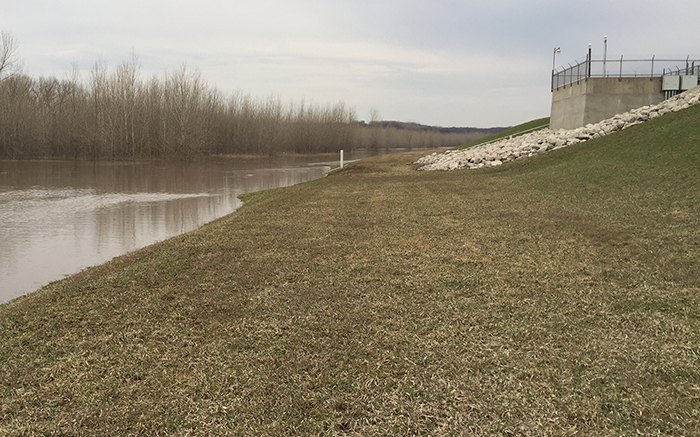5 Steps to Begin Preparations for Flood Season
Posted on Wednesday, March 4th, 2020 by Affinis CorpIn Federal Services, Stormwater, tagged in Tags: flood season, levee operators, levees

Though it can vary from year to year, flood season typically begins in April and runs through the end of July. This year, we are anticipating above average snow melt. Currently, the mountain snowpack is slightly above average.
The United States Army Corps of Engineers (USACE) is working to provide additional reservoir storage in the Missouri main stem dams by more than doubling the average releases out of Gavins Point Dam. Starting February 28th, USACE will be increasing Gavins Point releases to 41,000 cfs for at least the next 3 weeks (17,000 cfs is average for February.). Based on current soil moisture conditions, current plains and mountain snowpack, and long-term temperature and precipitation outlooks, the 2020 calendar year runoff forecast is 36.3 MAF above Sioux City, Iowa, 141 percent of average. As a comparison, the 2019 calendar year runoff was 60.9 MAF.
To prepare, we recommend levee operators take these steps now:
- Review their flood fight plan.
- Update their contact lists.
- Meet with all the flood fight stakeholders to make certain each one knows his or her responsibilities.
- Train any new team members.
- Take an inventory of the resources needed.
Throughout flood season, it’s important to:
- Understand which water elevations trigger the levee’s emergency action plan.
- Stay on top of weather forecasts, particularly how much water is anticipated and how that impacts elevations.
- Know how much time it will take to implement a response.
- Make sure everyone involved with flood fighting understands their responsibilities, as well as what prompts them to act.
- Determine who has the resources they’ll be activating. For example, they need to know who they should work with for road closures and/or evacuations.
Taking these measures protects communities. A well-executed flood fight plan can save lives and businesses. Learn more about levees here and here.